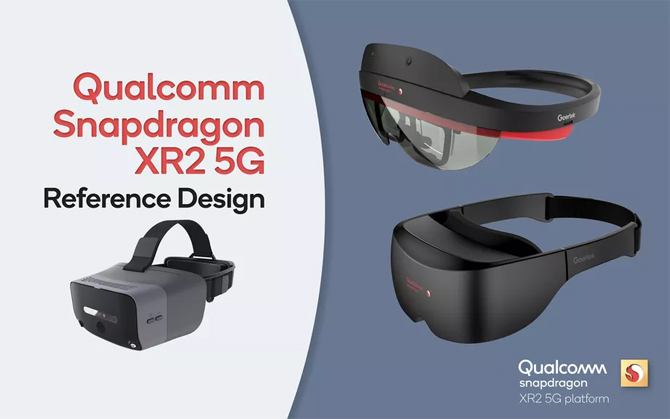Qualcomm has unveiled a reference design for its new augmented and virtual reality platform. The reference design serves to show what a device built for use with the Snapdragon XR2 would look like, which is a 5G enabled chipset designed for hardware with a focus on virtual reality and augmented reality.
Prottypes are still under development and some rendered images were released by the company
The design is a prototype produced by electronics maker Goertek, which has worked with Qualcomm in the past. It looks a lot like Qualcomm's previous XR1 reference design, as the company's head of VR / AR (or collectively "XR"), Hugo Swart, admitted to reporters.
The difference is that the new reference design can show the new features of the XR2, including support for 5G networks and up to seven cameras although it still uses 2K display panels for each eye instead of the maximum resolution 3K for the XR2 platform. The image below shows other variations of the reference design:

Qualcomm's line of chipsets for virtual reality and augmented reality got a little more complicated. It will continue to sell the XR1, which was announced in 2018, and some devices like Microsoft HoloLens 2 do not need a specialized platform.
Still, Swart says the XR2 chipset includes features that you can "really need to have an XR experience with premium quality", as the support for cameras that track eyes, lips and external space. He is "confident" that we will see commercial devices based on the XR2 platform as early as 2020, although the Coronavirus outbreak may delay some products.
Virtual and augmented reality is often used to sell 5G, as the super fast internet could help devices in content processing. Future devices with this technology may also be smaller and lighter.
Qualcomm promotes virtual reality and augmented reality specifically for business. Last week, its partner Nreal and the software company Spatial announced that they will offer collaborative workspaces based on augmented reality over 5G.
Nreal is expected to launch a pair of augmented reality glasses at a price of $ 499 later this year and Niantic, a developer of Pokmon Go, is apparently working with Qualcomm on a device of this type. Augmented reality glasses have not yet become popular enough, but Qualcomm hopes that its design will help with that.
Source: The Verge. (TagsToTranslate) qualcomm (t) snapdragon xr2 (t) qualcomm snapdragon xr2 (t) snapdragon xr2 5g (t) qualcomm snapdragon xr2 5g (t) virtual reality (t) vr (t) augmented reality (t) hololens 2
